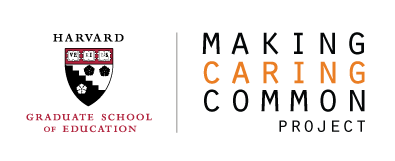Leaning Out: Teen Girls and Leadership Biases
JULY 2015
Are today's teen girls poised to close the gender gap tomorrow?
Making Caring Common’s report, Leaning Out: Teen Girls and Leadership Biases, suggests that teen girls face a powerful barrier to leadership: gender bias. Based primarily on a survey of nearly 20,000 students, our report suggests that many teen boys and teen girls—and some of their parents—have biases against teen girls as leaders. The report also offers recommendations for parents and educators for preventing and reducing gender biases.
We conducted several surveys, focus groups, and informal interviews to better understand students’ and adults’ biases related to gender and leadership. Our largest survey—19,816 students from a diverse range of 59 middle and high schools—included an implicit bias scenario designed to detect unconscious biases.
Media contact
Alison Cashin
617.495.1959
media@makingcaringcommon.org
“Our research suggests that the teen girls who are key to closing the gender gap appear to face an age-old and powerful barrier: gender bias, and specifically biases about their leadership. ”
Key findings
Many boys and girls expressed bias against girls as leaders in powerful professions.
Students were least likely to support granting more power to white girls as council leaders.
White girls appear to be biased against other white girls as leaders.
Some mothers appear to be biased against girls as leaders.
Biases against girls have many causes.
Awareness of bias matters.
Almost a quarter of teen girls—23%—preferred male over female political leaders while only 8% of girls preferred female political leaders, with 69% reporting no difference in preference.
Forty-percent of teen boys preferred male over female political leaders while only 4% preferred female political leaders with 56% expressing no preference. A higher percentage of boys preferred male business leaders (36%) to female leaders (6%). There was no significant difference between girls’ preference for male versus female business leaders.
Both boys and girls preferred females by large margins in traditionally female professions, e.g., as child care directors and arts program directors.
We conducted several surveys, focus groups, and informal interviews to better understand students’ and adults’ biases related to gender and leadership. Our largest survey—19,816 students from a diverse range of 59 middle and high schools—included an implicit bias scenario designed to detect unconscious biases.
Read more about our findings and recommendations in the Executive Summary (PDF) or by downloading the full report (PDF).
“We can’t let the gains women have made lull us into complacency and mask the very real biases that girls and women still confront.”
Recommendations
Check your own biases.
Cultivate family practices that prevent and reduce bias.
Teach teens to spot and effectively confront stereotypes and discrimination.
Don’t just let “boys be boys.”
Challenge teens’ biased assumptions and beliefs.
Use programs and strategies that build girls’ leadership skills.
Use this report to spur discussion.
Read more about our findings and recommendations in the Executive Summary (PDF) or by downloading the full report (PDF).
















